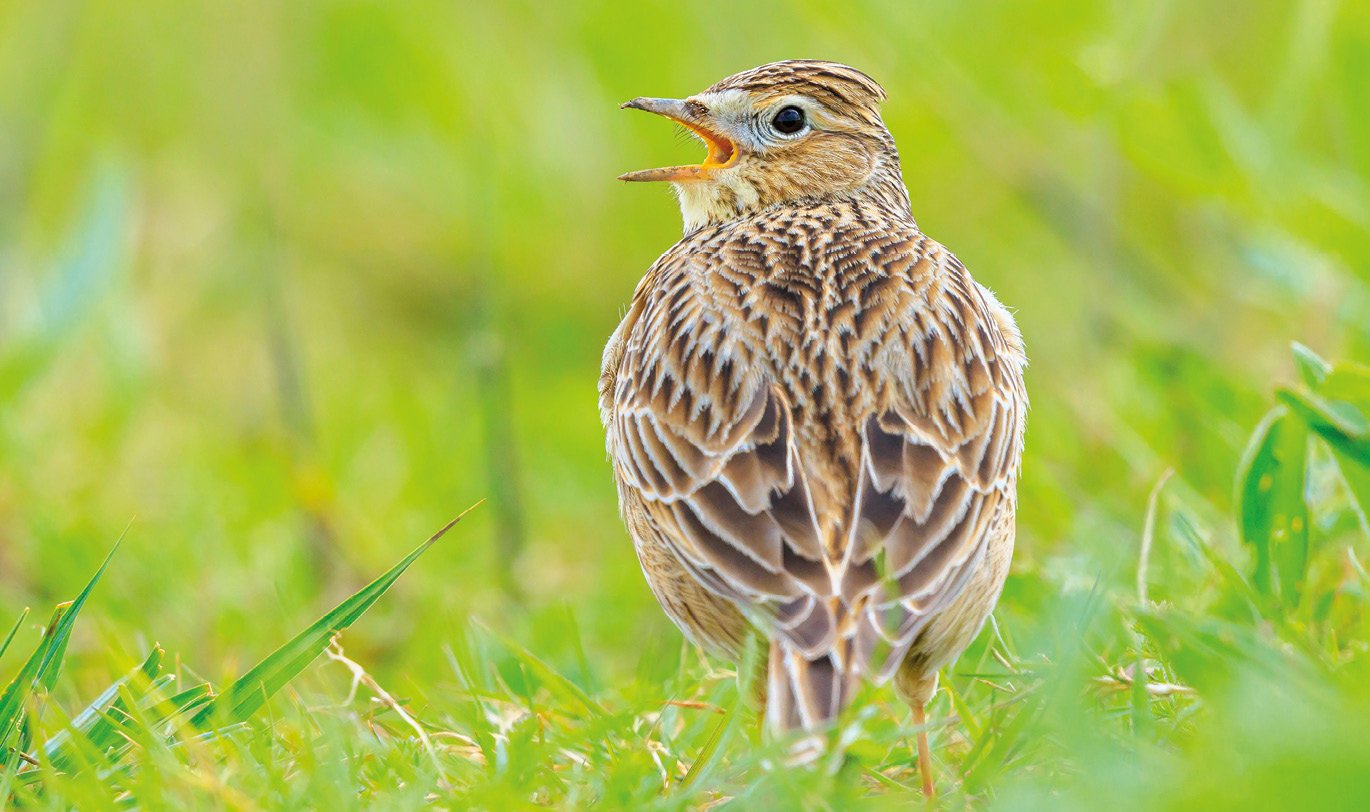The Wren Wildlife and Conservation Group’s Tim Harris reports on a successful breeding season for the Skylarks of Wanstead Flats, where simple protection measures are helping these ground-nesting birds
He rises and begins to round,
He drops the silver chain of sound
Of many links without a break,
In chirrup, whistle, slur and shake.
The evocative opening lines of English poet George Meredith’s The Lark Ascending perfectly capture the essence of a male Skylark’s spring song-flight. The poem, written in 1881, inspired Ralph Vaughan Williams to compose his single-movement work of the same name on the eve of World War I, with a violin beautifully playing the role of the lark.
The Skylark’s song epitomises the British countryside, an exuberant outpouring of joy to herald a new spring. Although, sadly, changes in agricultural practices have resulted in the species’ population declining dramatically in recent decades, we still have a few birds on Wanstead Flats. Since they are ground-nesters, Skylarks face more problems than most birds during the breeding season. Rats, foxes and crows may take the eggs, and people and dogs disturb the nesting sites. A rat eradication programme has helped, but not much can be done about the foxes and crows. By 2021, the lark population on the Flats – the closest to the centre of London – had fallen to just three pairs.
With the larks on the brink of extinction locally, the City of London Corporation, supported by the Wren Group, fenced off two areas of the Flats where they breed between March and the end of August. Initially, they used unsightly green plastic, but for the last two seasons, rope has been strung between the wooden fenceposts instead. This is less visually intrusive, can be reused – and it works. Human and canine footfall within the roped areas has been virtually eliminated in the sensitive spring and summer months.
Early in the spring, each male lark makes prolonged song-flights, spiralling ever higher while constantly emitting Meredith’s unique “silver chain of sound.” Counting the number of singing males is the best way to determine bird numbers, and this year, the season started with three. Apart from the song-flights and occasions where the birds feed on the shorter grass of the model aircraft runway, it is notoriously difficult to work out what the birds are doing. Since most of their activity – feeding, building nests, laying eggs and feeding young – is conducted in thick grass, which grows taller as spring turns to summer, long, patient hours of observation are required.
This year’s three breeding pairs made five breeding attempts, at least four of which got to the stage of adults feeding young. An end-of-season walkover of the two roped-off areas produced a count of between eight and 10 birds, meaning that a minimum of two (and possibly four) young were fledged this year. Growing the population on the Flats will take time, but I’m hopeful that our three pairs will increase to four next spring.
For more information on the Wren Wildlife Group, visit wnstd.com/wren





